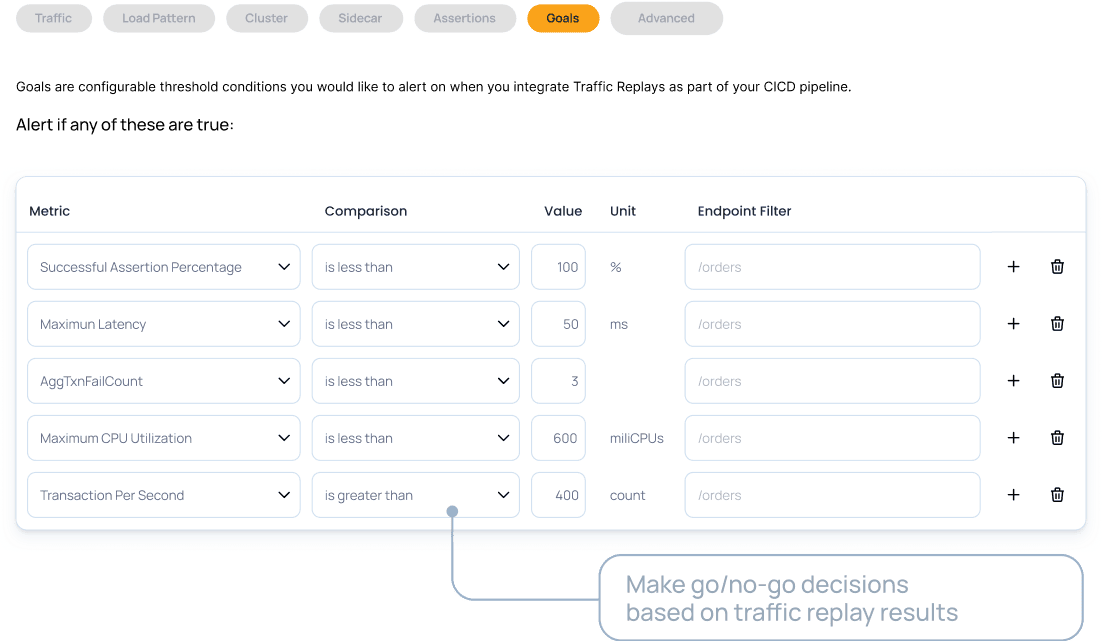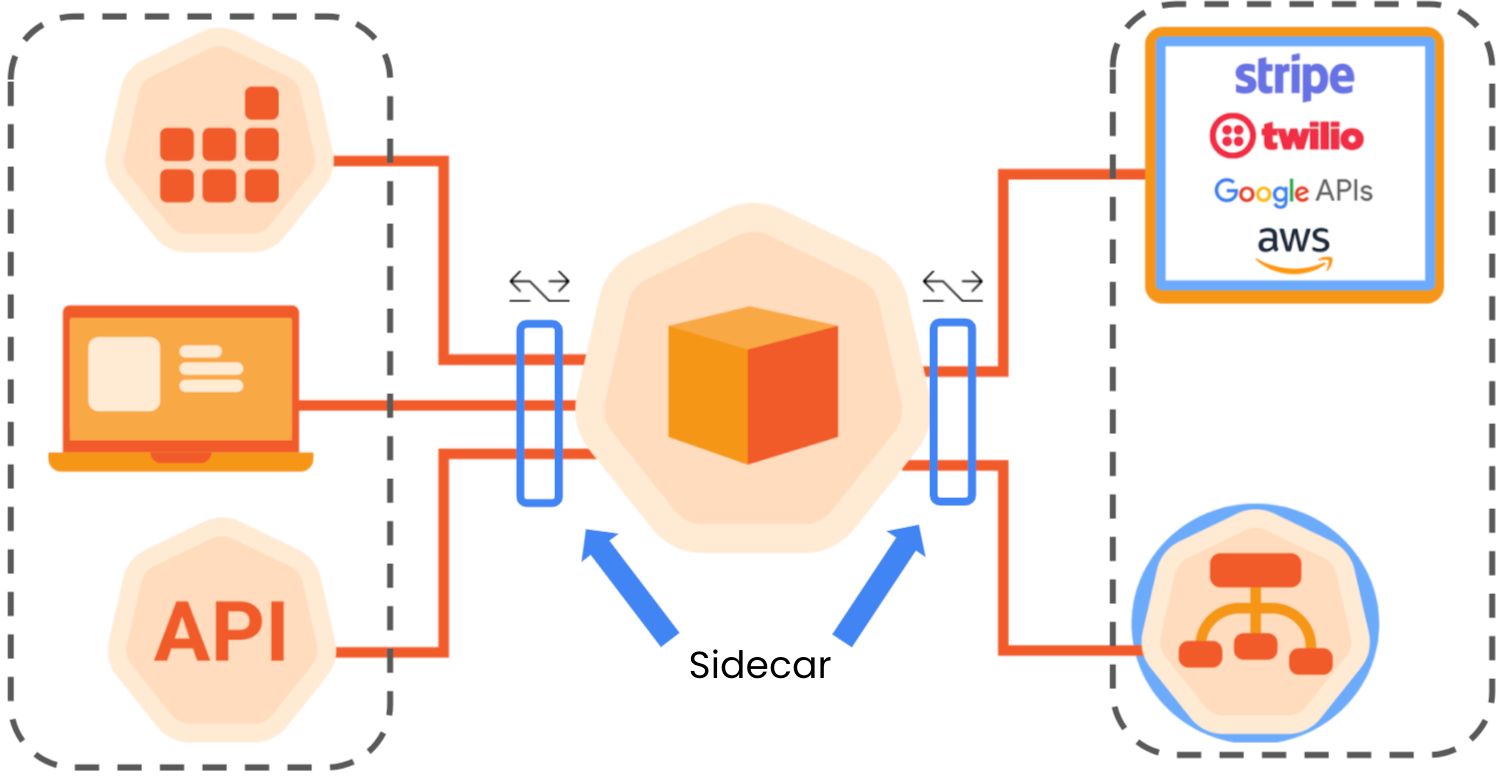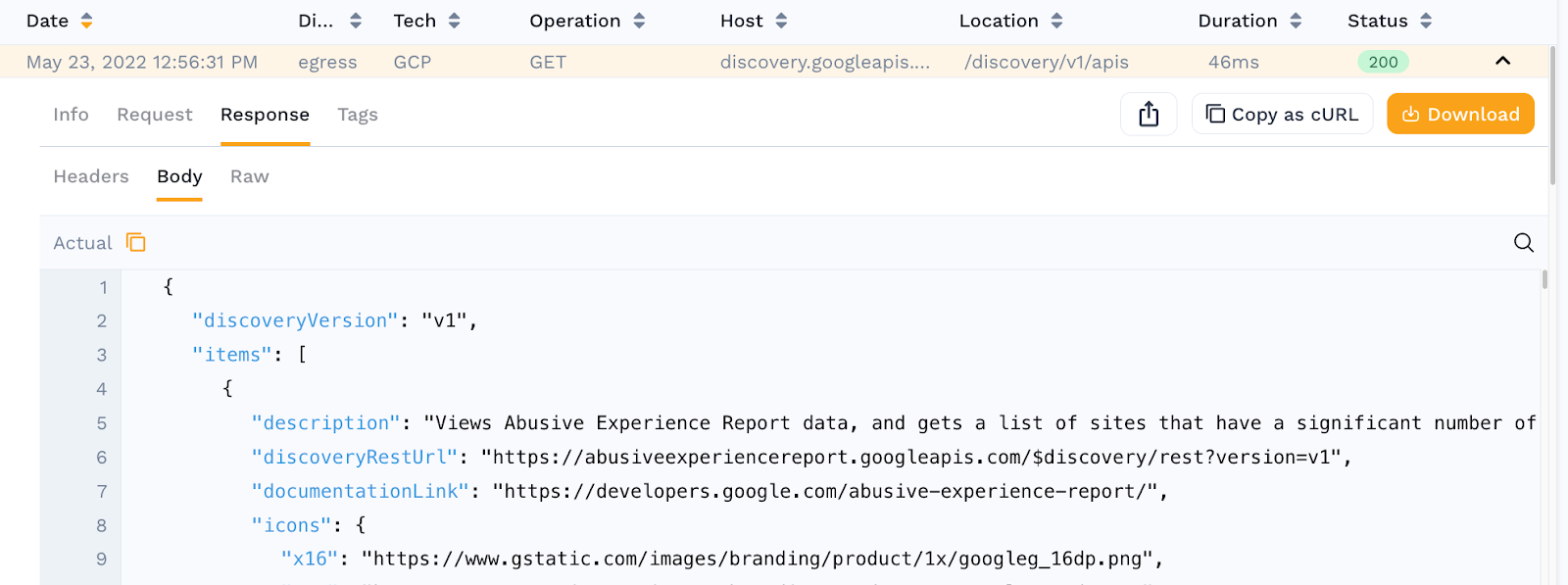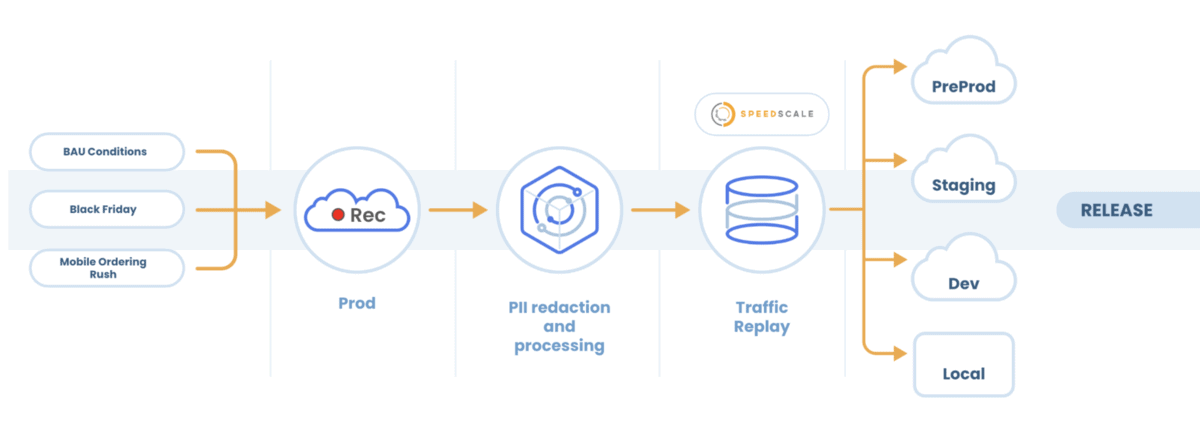The Silent API Killer: Data Coupling in Your Tests
In API testing, speed, accuracy, and confidence in test results are everything. Regardless of whether you’re validating functionality, testing performance under load, or ensuring compliance with your security posture and standards, the ultimate goal is the same: catching problems before they reach production.
But what if your tests are lying to you?
Lurking beneath even the most sophisticated test suites is a subtle, pervasive threat: data coupling. Data coupling is a silent API killer that doesn’t throw immediate errors or break builds in obvious ways. Instead, it erodes the core reliability and honesty of your testing process, undermining the trust you place in test results and introducing brittleness into your development lifecycle.
Today, we’re going to explore what data coupling is, how it creeps into your automated API testing workflows, and what you can do to combat it using modern tooling and best practices. We’ll examine how data coupling can impact everything from data accuracy to mitigating security flaws, and provide some critical steps you can take to address this issue at scale.
What Is Data Coupling in API Testing?
So, what is data coupling at its core? Data coupling occurs when your testing is overly dependent on the specific state of the data layer. Issues such as pre-populated database records, static user IDs, or shared data setups between test cases can undermine the test results and the inferences based on this information. Rather than validating API functionality in isolation, tests become indirectly tied to fragile or hidden conditions, often without the developer being aware of it. Over-reliance on specific parameters in API unit tests can further entrench data coupling, making it harder to validate endpoint behavior across a range of valid and invalid inputs as defined in the API’s documentation.
This problem is especially common in API integration testing and automated validation, where endpoints must interact with databases, caches, queues, or other backend systems. When your API test suite depends on a particular order of operations or a specific record being present, you’re not testing functionality - you’re validating the tightly constrained circumstances of a particular scenario.
Ultimately, this tight coupling creates false positives, makes debugging more difficult, and introduces flaky tests that randomly fail or pass depending on the state of the data.
Why Is This a Big Deal?
While it may seem like a minor inconvenience, data coupling has far-reaching consequences across your API lifecycle:
- False confidence - your test results may look green, but they’re green for the wrong reasons.
- Regression risks - seemingly unrelated changes to the database schema or seed data can break tests in subtle ways.
- Slower debugging - when a test fails, you have to spend time tracing whether the failure is due to a logic bug or a stale dependency.
- Reduced reusability - test cases are harder to port across environments or share across teams when they are highly coupled, significantly reducing the reusable elements.
- Unscalable environments - coupled tests don’t run reliably in parallel or in ephemeral CI environments.
These issues hurt the very goals of automated testing - speed, repeatability, and confidence. It makes your testing focused directly on a specific data state and the API within that state, rather than on the core functionality of your service itself. You end up validating a very specific and unrealistic situation, leaving you feeling great about a codebase that will likely break in real conditions.
Types of API Testing Most Affected
Every layer of API testing is vulnerable to data coupling, but it should be noted that some different types of testing are more vulnerable to the problems inherent in data coupling than others:
- Functional API Testing - This type of test ensures that the API performs the intended business logic as expected. Each test should focus on a specific function of the API, validating that the intended procedure or task is executed independently of data state. Coupling makes it difficult to isolate pure functionality, validating only that the data and the service are working as intended within that given situation, and not within the entire business flow.
- Integration Testing - This focuses on how various parts of the system interact, especially with databases or external APIs. It’s the primary breeding ground for coupling, and integration testing with bad coupling issues will make you think everything looks good across your various API endpoints without surfacing issues around data integrity or usability.
- Load Testing & Performance Testing - If your test data isn’t well controlled, you could be measuring the performance of the data layer, not the API. This can severely undermine your API performance and API monitoring functions, but can also lead to issues where values or expectations stated in the API documentation are wildly off base.
- Security Testing - Tests such as SQL injection checks or validation testing require controlled environments to be meaningful. Data coupling leads to a myopic view of your API calls and their security flows, and can make you think you have a lot better defences than you actually do.
- Regression Testing - tests that should remain stable across code changes are especially vulnerable to hidden dependencies. This can affect the veracity of your usability testing, general focus software testing, and even critical component testing. Even UI testing and GUI testing can be affected when frontend behavior is indirectly tied to backend data assumptions.
How Data Coupling Slips into Your Test Suite
With this in mind, we should examine how to address this issue. First, we need to identify where the data coupling even enters our development lifecycle. While every case is unique, data coupling often enters your API test suite through small shortcuts or legacy habits. Improper implementation of test cases and failure to implement isolation strategies can also lead to persistent data coupling issues.
Here are some common culprits you can dive into:
Shared Test Fixtures
Using global setup scripts that create static user accounts, tokens, or product SKUs can lead to implicit dependencies across your entire test suite. This might make API test automation easier, but it significantly reduces its effectiveness, as you’re trading off complexity for data coupling that can be pernicious and multilayered.
Hardcoded Values
API test scripts that reference hardcoded IDs (e.g., user_id = 12345) silently assume that this record exists and hasn’t changed. This can lead to some minor issues in the testing process itself, but can also lead to collisions, incorrect assumptions in future tests, and failed manual testing that makes assumptions on the code structure and data storage methodologies.
Sequenced Tests
Tests that must be run in a particular order because one creates data that another consumes are a classic sign of coupling. APIs do often work this way, but they can also infer data, receive data, or transform out-of-scope or format data into more usable formats. Missing these steps with sequenced tasks can make you see a much more structured and effective data flow than actually exists.
Tightly Scoped Environments
Using a shared development or staging environment for all testing means that any data mutation can impact multiple teams, leading to inconsistent or unreliable results. Isolation can help mitigate this significantly, and is really a best practice in and of itself.
Incomplete Cleanup
Test cases that don’t reset or remove data after execution can leave behind artifacts that affect downstream tests. This can have a tack-on effect over time, so this is a classic place to look if you start to see small issues compounding into larger ones.
API Endpoints and Monitoring: The Overlooked Victims
API endpoints are the critical gateways where your application programming interface (API) interacts with the outside world—serving as the bridge between users, systems, and the underlying services that power your software. Every API request, whether it’s fetching user data, updating records, or triggering business logic, passes through these endpoints. Yet, despite their central role, API endpoints are often the most overlooked victims when it comes to robust monitoring and protection.
Without effective API monitoring, these endpoints can quickly become points of vulnerability. Unmonitored API endpoints are susceptible to misuse, unauthorized access, and performance bottlenecks that can ripple through your entire system. API monitoring isn’t just about catching failures; it’s about proactively tracking API requests, responses, and performance metrics to ensure your interface remains secure, reliable, and responsive for all users.
A well-monitored API provides real-time visibility into how requests are handled, how systems interact, and where potential issues may arise. This level of insight is essential for maintaining the integrity of your API, detecting anomalies before they impact users, and ensuring that your application programming interface continues to deliver value as your software evolves.
In today’s interconnected world, where APIs are the backbone of modern web applications, neglecting API monitoring can undermine even the best-designed systems. By prioritizing the health and security of your API endpoints, you not only protect your users but also strengthen the foundation of your entire interface and the services it enables.
What Should API Testing Look Like?
To avoid data coupling, API testing needs to embrace isolation, repeatability, and determinism. Your tests should:
- Spin up and tear down their own test data
- Avoid assumptions about the application’s state
- Run reliably in parallel and in CI/CD
- Validate only the API layer, not downstream systems or shared services
In short, your API testing strategy should focus on testing behavior, not state. This is an area where automation can help, but manual attention and skill are essential to compound these skills, and adopting the right practices will enable more effective API testing by facilitating better communication and data sharing between components.
Integrating new testing tools and methodologies can further reduce data coupling and improve test reliability by allowing you to connect new solutions with existing systems and leverage their combined strengths.
Strategies to Reduce Data Coupling
Fortunately, you can reduce or eliminate data coupling with a combination of mindset, process, and tooling. Isolating software components during testing is essential to prevent unintended interactions and data dependencies.
Use Mock Services or Snapshots
Instead of testing against live databases, capture real API requests and responses using traffic snapshot tools. These tools can handle various data formats, such as JSON and XML. Tools like Speedscale let you replay traffic for load testing, functional testing, or regression testing without reintroducing coupling.
Benefit: This creates a stable, repeatable testing environment with real-world data fidelity but without side effects. This approach is especially useful for web API testing, where consistent data formats and responses, including XML, are critical.
Generate Data Per Test
Use fixtures or factory libraries to generate test data at runtime. Each test case should own the data it depends on, and delete it afterward.
Benefit: This enables tests to run in parallel, ensuring repeatable results.
Leverage Containerized Environments
Run your testing environment in containers or sandboxes that reset between test runs. This isolates tests from external data drift and enforces clean state validation.
Benefit: Tools like Docker, Testcontainers, or ephemeral CI environments help make this feasible.
Adopt Contract Testing
With tools like Pact or Dredd, contract testing ensures that each API responds according to a shared schema, without needing to hit live services.
Benefit: This ensures correctness without relying on specific test data, and also builds trust and reliability for other developers who depend on your API.
Avoid Chained Test Dependencies
Every test should be self-contained. Don’t build test suites where one test depends on data created by a prior test unless explicitly orchestrated.
Benefit: This removes test dependencies and data coupling entirely from chained flows!
Automation-First Doesn’t Mean Shortcut-First
Many of these issues stem from the poor adoption of automation. To be clear, test automation is essential, especially for large-scale applications and distributed microservices. But automation should never be at the expense of reliability.
Modern API testing tools often require little to no coding, allowing testers to create and execute tests directly from a browser-based interface. This means you can test web APIs in your browser without the need for programming knowledge or installing a desktop application.
Using robust automated testing tools enables you to scale your test coverage across the entire API lifecycle, from unit testing and validation testing to performance testing and monitoring. But these tools are only as effective as the design of your test cases.
To maximize the benefits of your automated API testing, prioritize the quality of the scenarios and the independence of the data.
What to Look for in API Testing Tools?
When choosing or evaluating your API testing platform, look for platforms that support:
- Test data generation and cleanup
- CI/CD pipeline integration
- Test automation for functional API testing
- Load testing and performance monitoring
- Security testing and API validation
- Replay-based testing (traffic capture and re-use)
- Support for both REST (JSON) and SOAP (Simple Object Access Protocol)
- Parallel and asynchronous execution
For example, these features allow you to automate regression tests, validate API responses in different environments, and ensure performance under load in real-world scenarios.
This enables your team to confidently test APIs without introducing unintended dependencies or bottlenecks.
Don’t Let Data Coupling Kill Your Confidence
API testing plays a central role in the modern software development process, enabling fast iteration, improved API quality, and better user experiences. API testing is important because it ensures the functionality, reliability, security, and performance of APIs, which are essential for delivering high-quality, dependable digital experiences and maintaining customer trust. But data coupling, when left unaddressed, quietly undermines that progress.
To introduce API testing in a way that scales, supports automation testing, and protects against security vulnerabilities, your tests need to be decoupled from state and rooted in behavior.
Whether you’re testing response data, validating encryption methods, or just making sure an API responds correctly under pressure, eliminating data coupling is key to making your tests reliable and meaningful.
Test smart. Test often. And most importantly, test clean.
Developing expertise in decoupled API testing can significantly benefit your career by preparing you for advanced roles in software quality assurance and development.
Why Speedscale Is Your Best Defense Against Data Coupling?
If data coupling is the silent API killer, Speedscale is your shield. Traditional API testing tools often assume clean environments, stable data, and perfectly isolated services - but that’s rarely the case in modern software systems. Speedscale flips the script by bringing real traffic into your testing process in a controlled, repeatable way. Speedscale handles the heavy lifting of managing complex test scenarios, data isolation, and scaling for developers.

How Speedscale Helps Eliminate Data Coupling – and Improves the API Testing Process
Speedscale stands out as a powerful ally in the fight against data coupling, transforming the way developers approach API testing across a wide range of API architectures. By focusing on the independence of test data and the isolation of test environments, Speedscale empowers teams to create API tests that are both comprehensive and reliable—no matter how complex your web APIs, SOAP APIs, or remote procedure calls may be.
With Speedscale, developers can easily generate and manage test data for each API endpoint, ensuring that every test is self-contained and free from hidden dependencies. This approach not only eliminates the risk of data coupling but also enables parallel testing, faster feedback cycles, and more accurate validation of API functionality. Whether you’re working with public APIs, internal services, or modern web APIs, Speedscale’s tools make it simple to validate every aspect of your application programming interface.
One of Speedscale’s key strengths is its ability to capture and replay real API requests and responses, allowing you to simulate production-like scenarios without the risk of contaminating your test environment. This means you can test edge cases, performance under load, and even complex workflows across multiple APIs—all while maintaining the efficiency and repeatability that modern development demands.
Speedscale also supports a wide variety of API architectures, from RESTful web services to Simple Object Access Protocol (SOAP) APIs and beyond. This versatility ensures that your API testing process remains robust and adaptable, regardless of the technologies or protocols your systems use. By providing detailed insights into API performance, response times, and error handling, Speedscale enables developers to quickly identify and resolve issues before they reach users.
Ultimately, Speedscale enables you to deliver high-quality APIs that meet the needs of your users and the demands of your business. By eliminating data coupling and streamlining the API testing process, you reduce risk, improve efficiency, and ensure that your APIs are thoroughly tested and validated—ready to power the next generation of web applications and services.
How Speedscale Helps Eliminate Data Coupling - and Improves the API Testing Process
Traffic Capture & Replay
Automatically record real-world API requests and responses, including edge cases and sensitive data scenarios. Reuse this traffic to run deterministic, production-like tests without relying on fragile fixtures or shared test databases.

Test Environment Isolation
Run tests in fully sandboxed environments, eliminating cross-test contamination and flaky failures due to shared data. This ensures each client receives consistent and reliable responses during testing. Isolated environments are especially important when multiple clients are interacting with the API simultaneously. This leads to better testing and API monitoring that you can believe in.

Built-in Load & Performance Testing
Simulate realistic conditions based on actual usage patterns to see how your API performs under pressure, coupling to live systems. This approach allows you to analyze server responses for both correctness and performance during load testing.

Automated Validation & Assertions
Use intelligent assertions to validate response data and error codes across endpoints, thereby increasing confidence in your test results and the integrity of your test status. Automated validation should also include checks for proper authorization to ensure secure access control.

CI/CD Integration
Seamlessly fit into your existing pipelines and API testing strategy, making it easy to scale testing without scaling complexity.

Conclusion
With Speedscale, you get more than test automation - you get data independence, environment stability, and true production fidelity. Whether you’re focused on security testing, regression testing, or scaling your automated API testing suite, Speedscale helps you identify security vulnerabilities, validate performance, and maintain high API quality at every stage of the API lifecycle. These practices ensure that your app delivers reliable and secure experiences to users. Robust API testing also benefits websites by ensuring seamless integration and reliable functionality across web platforms.
Ready to eliminate flaky tests and build trust in every release?
Try Speedscale today and turn your API testing process into a competitive advantage.